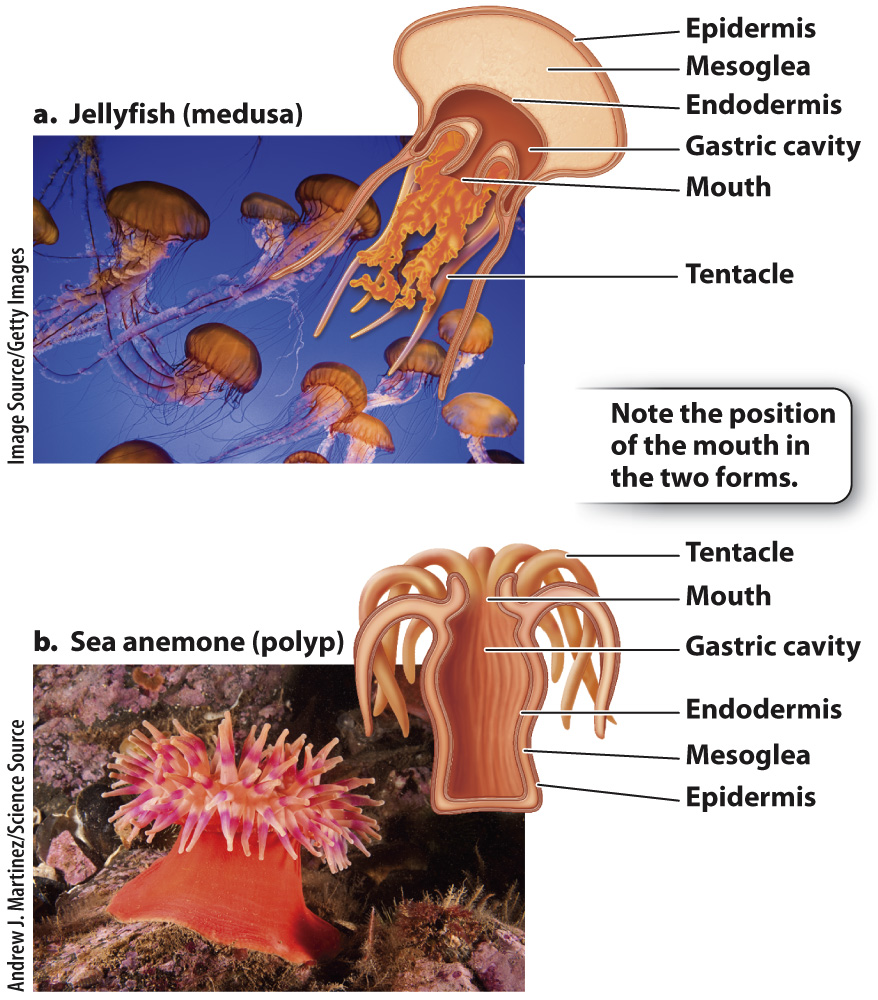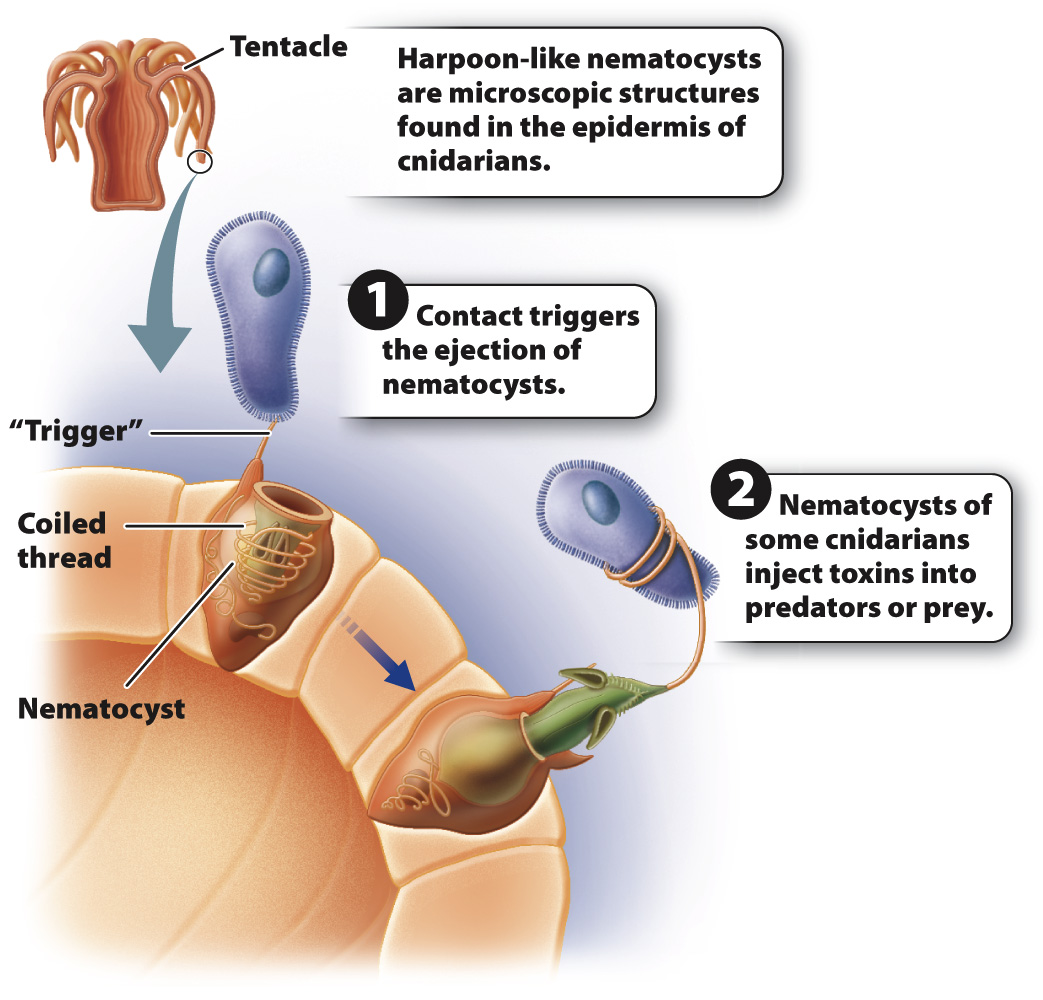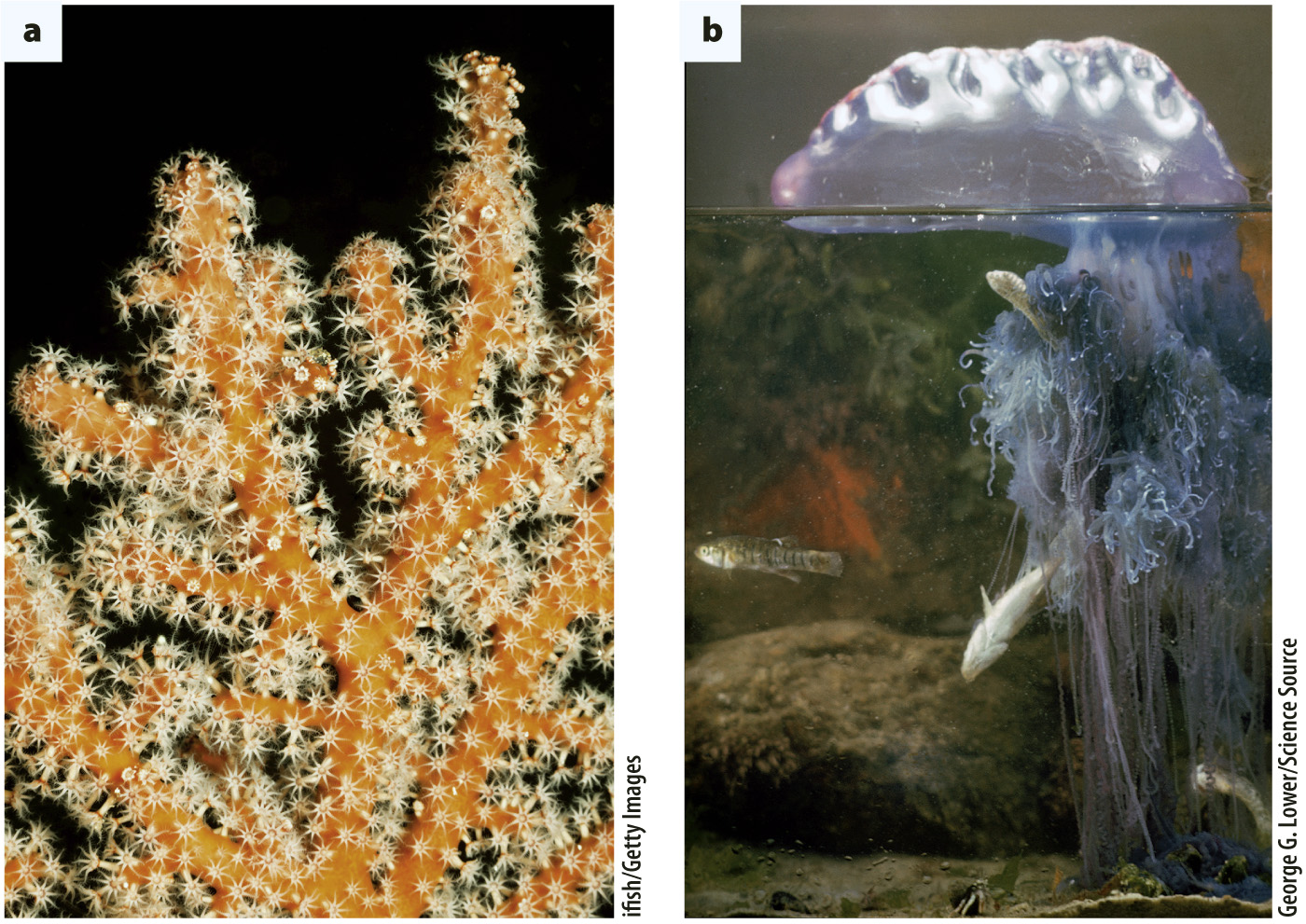Cnidarians are the architects of life’s largest constructions: coral reefs.
Many of us have encountered at least a few cnidarians. Jellyfish flourish in marine environments from coastlines to the deep sea; sea anemones cling to the seafloor, extending their tentacles upward to gather food and deter predators; corals secrete massive skeletons of calcium carbonate, forming reefs that fringe continents and islands in tropical oceans.
Jellyfish and sea anemones look strikingly different, but they share a body plan common to all cnidarians (Fig. 44.8). At one end of the radially symmetrical body is a mouth surrounded by tentacles armed with stinging cells that subdue prey and defend against enemies. An anemone is like a jellyfish stuck upside down onto the seafloor with its tentacles and mouth facing upward. We call a free-

The mouth of both medusa and polyp opens into a closed internal gastric cavity, the site of extracellular digestion and excretion. Rather than digesting food particles inside individual cells as sponges do, cnidarians receive both food and digestive enzymes in the gastric cavity. (The digestive enzymes are secreted by cells that line the walls of the cavity.) This arrangement permits cnidarians to digest large food items, such as a whole fish (paralyzed by the stinging cells on the tentacles), whose dissolved nutrients can then be absorbed through the walls of the cavity. Cnidarians, then, can consume many types of food that are unavailable to sponges.
The cnidarian body develops from a diploblastic embryo (one with two germ layers). It has an outer layer, the epidermis, which develops from the ectoderm, and an inner lining, the endodermis, that derives from the endoderm. These tissues enclose a gelatinous mass called the mesoglea (the “jelly” of jellyfish). This organization sounds a bit like the sponge body plan, but there are important differences, many of which are shared characters between cnidarians and the rest of the eumetazoa.
First, in cnidarians, the cells that form the epidermis and endodermis occur as closely packed layers of cells embedded in a protein-
Second, cnidarians have a wider array of cell types than sponges do, permitting more sophisticated tissue function. Musclelike cells allow jellyfish to swim through the ocean. A simple network of nerve cells permits cnidarians to sense their environment and respond to it by directional movement. No such cells occur in sponges. Cnidarians don’t have a brain, but at least a few have light-
Moreover, whereas sponges filter water to gain food, cnidarians are predators, capturing prey with their tentacles and digesting it in the gastric cavity. Specialized cells on the tentacles contain a tiny harpoonlike organelle called a nematocyst, often tipped with a powerful neurotoxin that greatly aids prey capture and defense against other predators (Fig. 44.9). Other specialized cells lining the gastric cavity secrete digestive enzymes that break down ingested food into molecules that can be taken up by cells lining the cavity by endocytosis. There is no specialized passage for waste removal. Instead, waste is excreted back into the gastric cavity and leaves by way of the mouth. Oxygen uptake and carbon dioxide release occur by diffusion.

Many cnidarians reproduce asexually to form colonies. For example, corals form extensive rounded, fan-

About 9000 species of cnidarians live in the oceans. Reef corals are remarkable not only for the size of their skeletal colonies, but also for their mode of nutrition. Most have lost the ability to capture prey and instead gain nutrition from symbiotic algae in their surface tissues.
Quick Check 2 How do muscle cells enable cnidarians to function in ways that sponges cannot?
Quick Check 2 Answer
Muscle cells permit movement, enabling many cndarians to seek and capture prey.